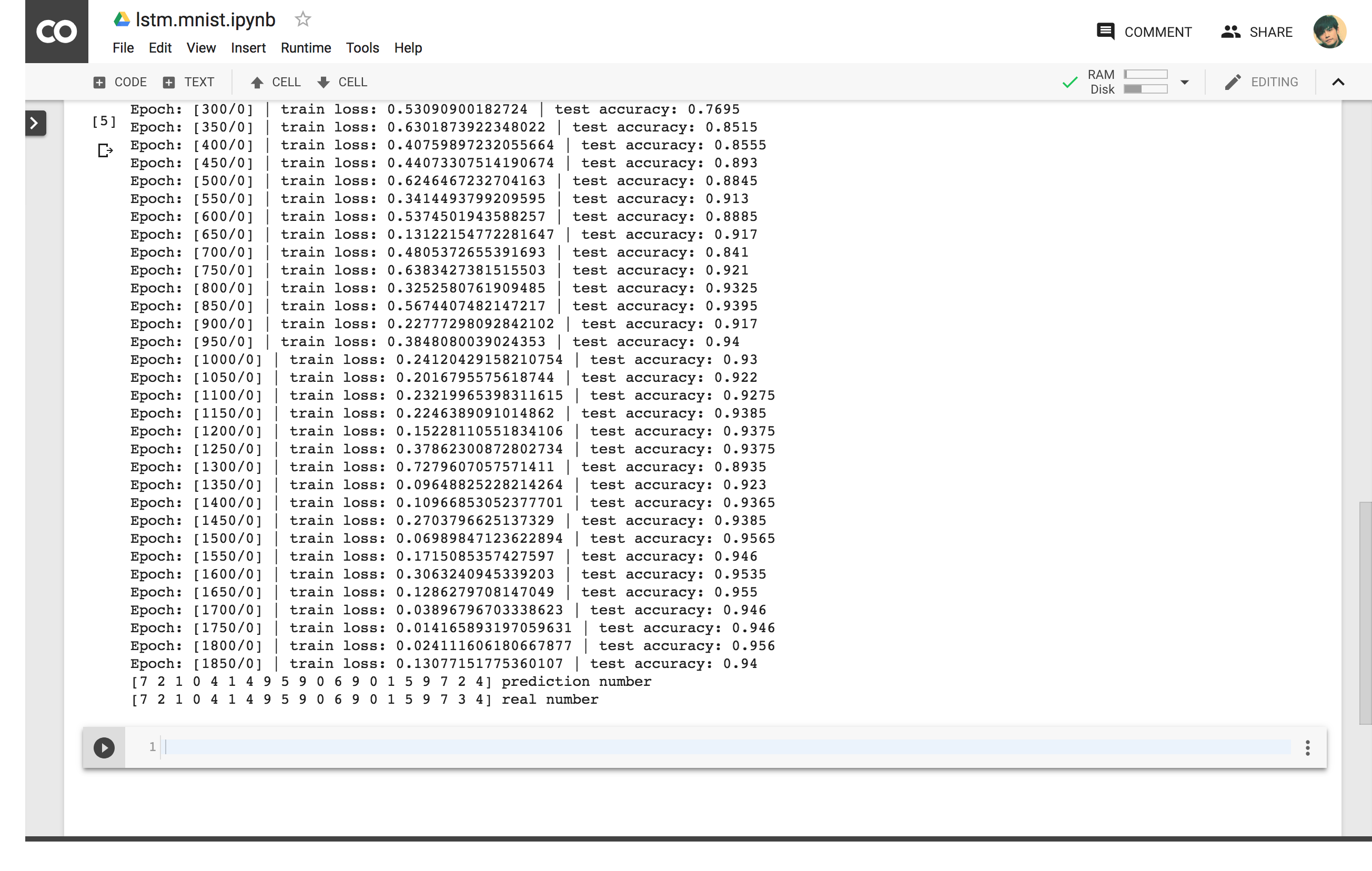1
2
3
4
5
6
7
8
9
10
11
12
13
14
15
16
17
18
19
20
21
22
23
24
25
26
27
28
29
30
31
32
33
34
35
36
37
38
39
40
41
42
43
44
45
46
47
48
49
50
51
52
53
54
55
56
57
58
59
60
61
62
63
64
65
66
67
68
69
70
71
72
73
| import torch
from torch import nn
import torchvision.datasets as datasets
import torchvision.transforms as transforms
torch.manual_seed(2019)
EPOCH = 1
BATCH_SIZE = 32
TIME_STEP = 28
INPUT_SIZE = 28
INIT_LR = 0.01
DOWNLOAD_MNIST = True
train_data = datasets.MNIST(root='mnist', train=True, transform=transforms.ToTensor(), download=DOWNLOAD_MNIST)
train_loader = torch.utils.data.DataLoader(dataset=train_data, batch_size=BATCH_SIZE, shuffle=True)
test_data = datasets.MNIST(root='mnist', train=False)
test_x = test_data.test_data.type(torch.FloatTensor)[:2000] / 255.
test_y = test_data.test_labels.numpy()[:2000]
class RNN(nn.Module):
def __init__(self):
super(RNN, self).__init__()
self.rnn = nn.LSTM(
input_size=INPUT_SIZE,
hidden_size=64,
num_layers=1,
batch_first=True
)
self.out = nn.Linear(64, 10)
def forward(self, x):
r_out, (h_n, h_c) = self.rnn(x)
out = self.out(r_out[:, -1, :])
return out
rnn = RNN()
print(rnn)
optimizer = torch.optim.Adam(rnn.parameters(), lr=INIT_LR)
loss_func = nn.CrossEntropyLoss()
for epoch in range(EPOCH):
for step, (b_x, b_y) in enumerate(train_loader):
b_x = b_x.view(-1, TIME_STEP, INPUT_SIZE)
output = rnn(b_x)
loss = loss_func(output, b_y)
optimizer.zero_grad()
loss.backward()
optimizer.step()
if step % 50 == 0:
prediction = rnn(test_x)
pred_y = torch.max(prediction, 1)[1].data.numpy()
accuracy = (pred_y == test_y).sum() / float(test_y.size)
print(f'Epoch: [{step}/{epoch}]', f'| train loss: {loss.item()}', f'| test accuracy: {accuracy}')
prediction = rnn(test_x[:20].view(-1, 28, 28))
pred_y = torch.max(prediction, 1)[1].data.numpy()
print(pred_y, 'prediction number')
print(test_y[:20], 'real number')
|
